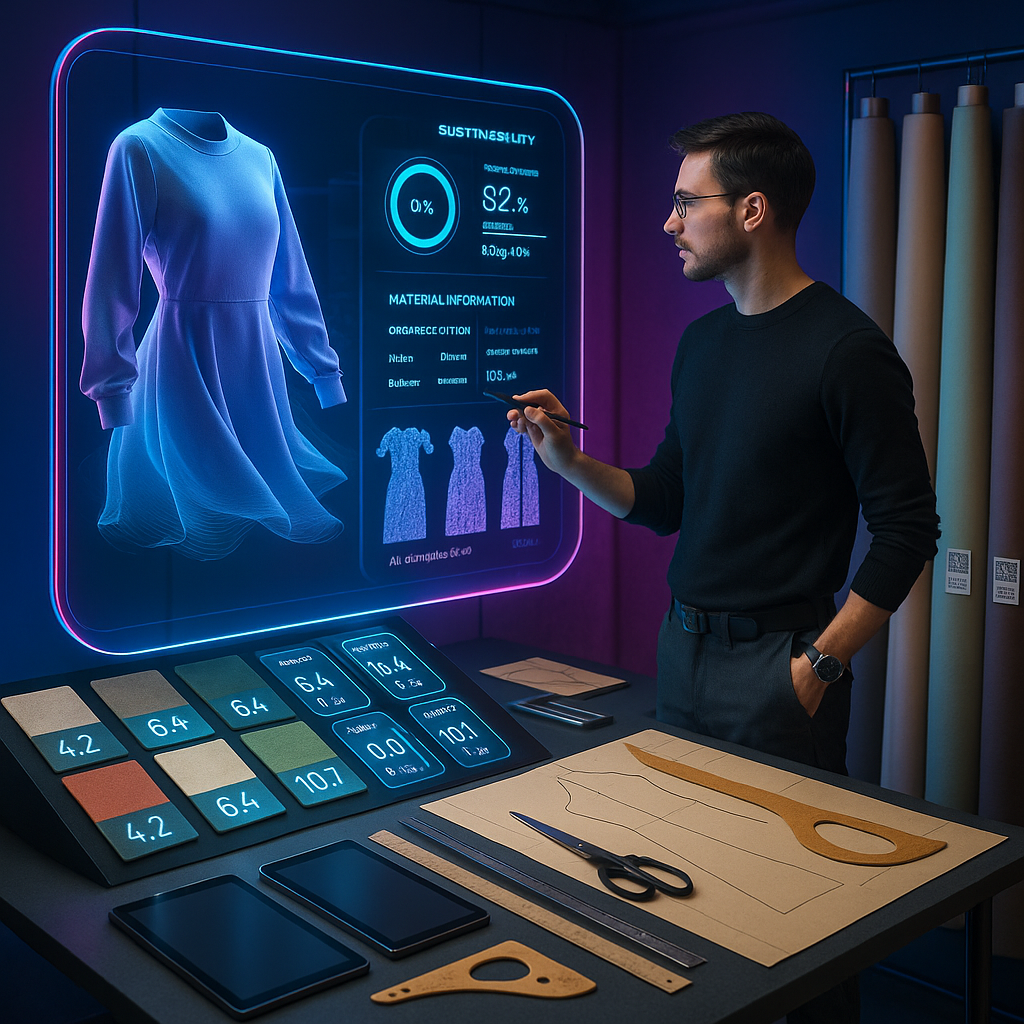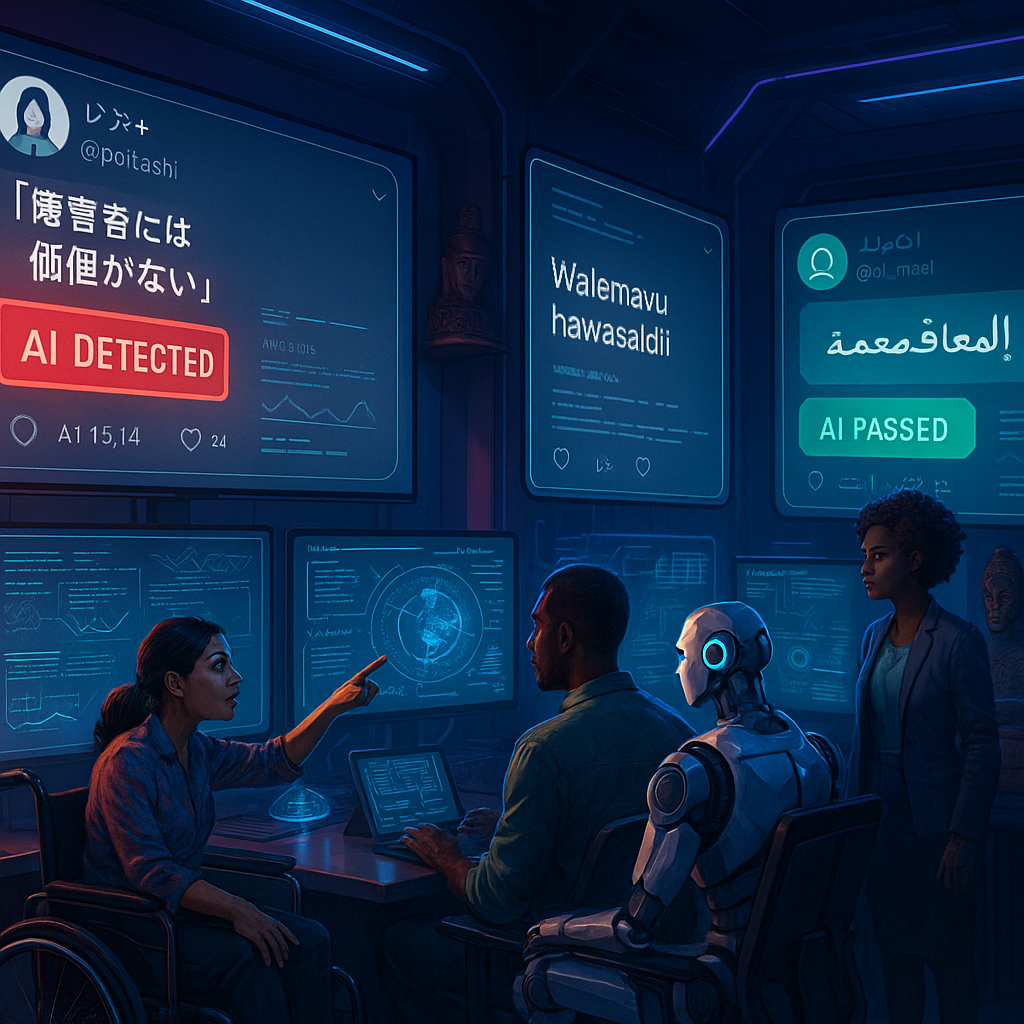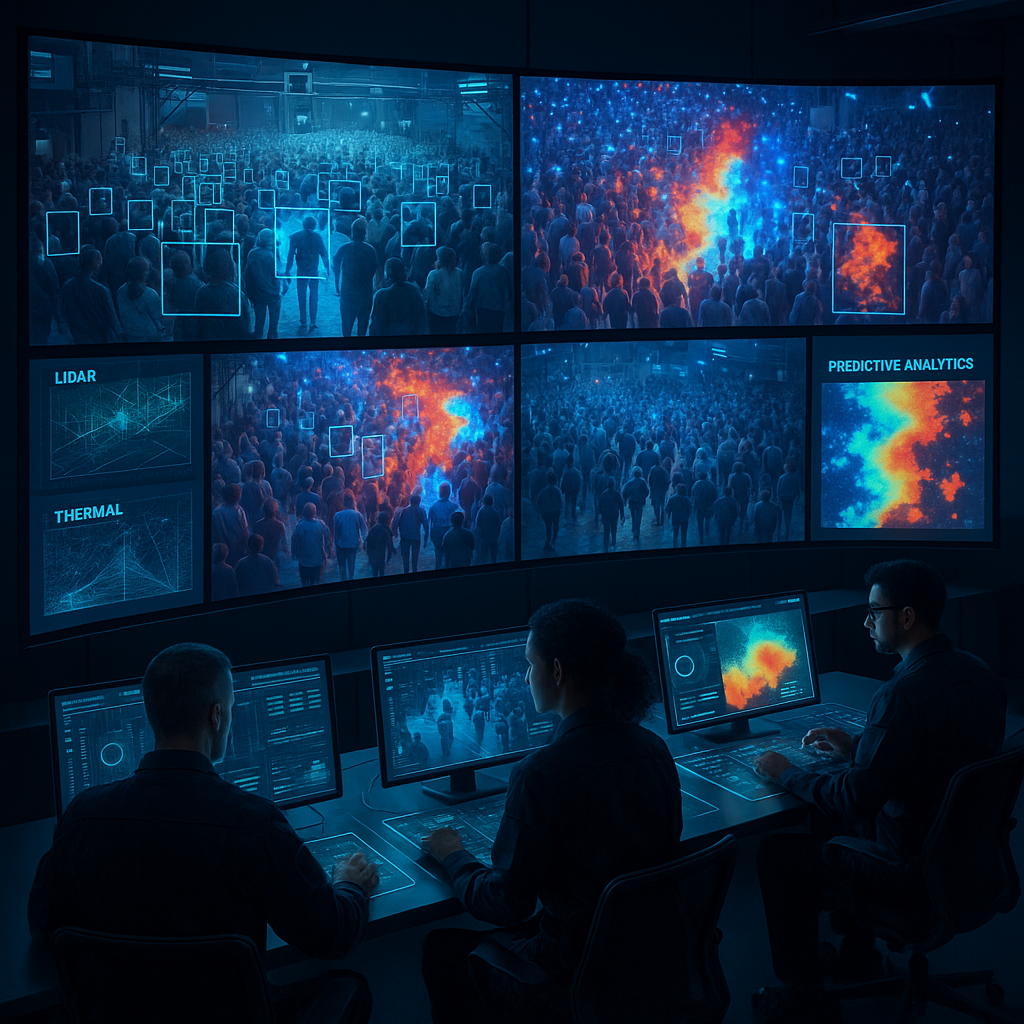Key Takeaways
- Pattern recognition algorithms bridge eras, connecting past and future. The same AI techniques that decode ancient symbols now harness historic patterns in fashion to generate innovative, eco-friendly designs. This speaks to the evolutionary spirit at the heart of generative fashion technology.
- Digital prototyping slashes material waste at the root. By empowering designers to craft and evaluate garments virtually, AI-powered digital samples remove the need for physical prototypes, significantly cutting fabric consumption and reducing landfill overflow from discarded samples.
- Generative AI weaves sustainability into every stitch. These systems analyze vast data (including material properties, consumer trends, and lifecycle assessments) to propose collections that maximize style while minimizing environmental harm. Sustainability becomes integral to the creative process.
- Smart material selection redefines eco-friendly fashion. AI-driven platforms assess fabric attributes such as sourcing, durability, and carbon footprint, guiding designers to choose the most sustainable materials with a level of precision once unimaginable.
- Smarter supply chains mean less waste. Generative design extends beyond the drawing board. AI optimizes demand forecasting and logistics, shrinking excess inventory and curbing overproduction so that less unsold stock ends up as textile waste.
- Seamless integration amplifies creativity instead of replacing it. Fashion AI liberates designers from repetitive tasks, enhancing their ability to push boundaries and focus on responsible artistry.
- Data-driven feedback loops drive continuous improvement. AI monitors market response and environmental impact in real time, informing future design cycles and accelerating the evolution of truly sustainable fashion systems.
Generative AI is far more than a new designer tool. It is a paradigm shift. By fusing digital intelligence with fashion’s ongoing quest for expression, function, and responsibility, technology and tradition are being woven together. The result is the birth of sustainable wardrobes for tomorrow.
Introduction
Every garment tells a story, carrying threads of tradition even as it is now rewoven by algorithms. Today, generative AI doesn’t simply streamline the fashion industry; it fundamentally transforms how sustainable fashion is visualized, designed, and brought to life. Designers are moving beyond mood boards and sketches, wielding digital tools that combine historical pattern recognition with virtual prototyping and data-driven material selection.
This shift matters, not just for aesthetics but for sustainability at every level. As AI-powered generative design becomes central to industry practices, carbon footprints shrink, creative horizons expand, and waste is minimized along the entire supply chain. These innovations free designers to focus on bold, responsive artistry, while AI ensures environmental impact is always front-of-mind. Let’s examine how this digital transformation is threading together creativity, sustainability, and tradition to redefine the very fabric of fashion.
AI-Powered Design Innovation in Fashion
Generative AI’s Transformative Role
The marriage of generative AI and fashion design marks a seismic change in our relationship with clothing. Modern machine learning techniques, such as Generative Adversarial Networks (GANs), allow computers to analyze archives of textile designs and generate new patterns that respect heritage while encouraging novelty. At Fashion House Moda, for example, integrating generative AI reduced design iteration times by 40% and tripled the diversity of unique design variations.
Stay Sharp. Stay Ahead.
Join our Telegram Channel for exclusive content, real insights,
engage with us and other members and get access to
insider updates, early news and top insights.
 Join the Channel
Join the Channel
Core capabilities of these AI systems include:
- Processing millions of existing designs to extract stylistic and structural insights
- Creating thousands of design alternatives in mere minutes
- Adapting output in response to real-time designer feedback
- Weaving sustainability metrics directly into creative exploration
Rather than replacing the artist, AI acts as a creative amplifier. This synergy allows the human imagination to leap beyond traditional boundaries, building upon evolving aesthetic and ethical demands.
Industries beyond fashion have also felt this impact. In interior design, AI crafts sustainable room layouts based on client needs and historic styles. In automotive design, generative AI proposes aerodynamic and eco-conscious body forms by analyzing decades of vehicle concepts. In jewelry and home goods, algorithms interpret old motifs for contemporary eco-friendly collections.
Sustainable Materials Selection Through Machine Learning
AI is revolutionizing how brands source materials by championing environmental responsibility through data. Advanced algorithms assess thousands of fabric options in terms of both performance and ecological impact. For instance, Eco-Fashion Tech’s AI-driven platform was able to cut material waste by 35% by matching design needs with optimal, low-impact fabrics.
This innovation unfolds through:
- Material Property Analysis: AI evaluates durability, comfort, and environmental effects for each fabric.
- Supply Chain Integration: Real-time data about material availability and sustainability lets companies quickly adapt sourcing.
- Predictive Performance: Machine learning anticipates how each fabric will behave across designs and conditions.
- Environmental Impact Scoring: Automated metrics assign eco-ratings, making responsible decision-making straightforward.
This is not just a fashion phenomenon. In healthcare, AI models help hospitals select greener, longer-lasting materials for uniforms and linens. In architecture, similar systems recommend sustainable building materials by balancing local sourcing, durability, and lifetime climate impact. Retailers now use these insights to influence sustainable product development and procurement.
Virtual Prototyping and Digital Sampling
Virtual prototyping stands out as a defining leap toward sustainable design. Advanced AI-powered 3D visualization has reduced traditional physical sample production by as much as 70% in leading fashion brands. Now, designers can visualize photorealistic garments, simulate how materials drape and move, and even collaborate in virtual fitting rooms from anywhere in the world.
Key advantages include:
- Photorealistic Rendering: AI creates vivid, true-to-life digital versions of garments
- Dynamic Fabric Simulation: Machine learning models how textiles behave as they move, fold, or stretch
- Fit Optimization: Algorithms predict how designs will fit a range of body types, improving inclusivity and reducing returns
- Virtual Fitting Sessions: Designers and clients collaborate remotely, customizing styles without generating physical waste
Luxury Brand X, for example, saved 2.5 tons of fabric each year after adopting digital prototyping. Outside fashion, this approach powers sustainable product development in automotive (with virtual crash testing), footwear (digitally iterated athletic shoes), and furniture (AR-based room fitting), dramatically curbing material waste before anything is manufactured.
Supply Chain Optimization and Waste Reduction
AI-driven supply chain optimization is transforming the way fashion and other industries address sustainability. Machine learning evaluates extensive patterns in production and logistics, revealing new pathways to reduce waste and boost efficiency. Recent initiatives have shown impressive results:
- 25% fewer unsold goods thanks to predictive demand forecasting
- 30% smarter inventory management, leading to less overstock and markdowns
- 45% lower transportation-related emissions through route optimization
This transformation relies on:
- Analyzing past sales and forecasting demand with automation
- Optimizing production schedules to avoid surplus
- Mapping eco-friendly transport routes
- Continuously adjusting inventory and logistics in real time
These advances ripple across industries. In food retail, AI predicts fresh produce demand to reduce spoilage. Pharmacies use similar systems to prevent overstock of medications, cutting medical waste. Environmental science teams leverage AI to allocate resources for maximum conservation impact.
For deeper insight into how predictive modeling techniques can revolutionize logistics and inventory management in other sectors, explore AI-driven supply chain efficiency.
Pattern Recognition and Heritage Integration
Modern AI does more than automate; it connects fashion’s ancestral roots with future-forward innovation. Algorithms trained on centuries’ worth of design motifs can rediscover and reinterpret traditional patterns, producing contemporary creations that honor cultural heritage sustainably.
Outcomes include:
- Digital archives preserving precious cultural designs, searchable and analyzable by AI
- Sustainable adaptations of ancient patterns, minimizing fabric while maximizing artistic impact
- Smarter pattern placement, reducing material off-cuts
- Enabling communities to pass heritage through technology without sacrificing ecological responsibility
In legal domains, AI is digitizing and protecting copyright in indigenous textile arts and motifs. In education, schools use AI-powered tools to teach design students about historical pattern evolution and cultural significance while incorporating sustainability principles.
Stay Sharp. Stay Ahead.
Join our Telegram Channel for exclusive content, real insights,
engage with us and other members and get access to
insider updates, early news and top insights.
 Join the Channel
Join the Channel
The importance of digitizing and archiving cultural memory is explored in greater detail in AI and collective memory.
Conclusion
The acceleration of AI within fashion (and allied fields) is not just a story of efficiency. It’s a reawakening of creative possibility and environmental stewardship. Generative models invite an explosion of design diversity, while intelligent systems enable every step from material selection to logistics to become a data-driven act of stewardship.
Virtual prototyping, supply chain optimization, and pattern recognition aren’t isolated trends. They are signals of a coming era where technology, tradition, and sustainability are inseparable. From healthcare textiles to home interiors and even educational tools, the same philosophies infuse industry after industry.
Looking ahead, those who marry adaptability, curiosity, and ethical foresight will shape the most compelling narratives. The most successful creators and innovators won’t just keep up with AI’s momentum; they will channel it thoughtfully, ensuring that our collective heritage and the spirit of responsible design remain vibrant. In this new era, our challenge is clear: to lead with both intelligence and intent, forging sustainable futures that honor both the past and the promise of what may come.





Leave a Reply